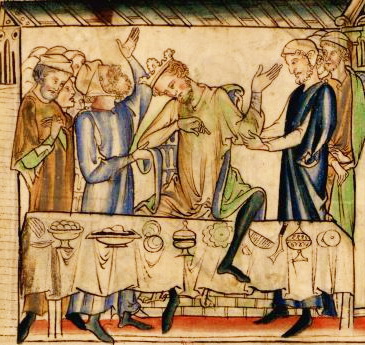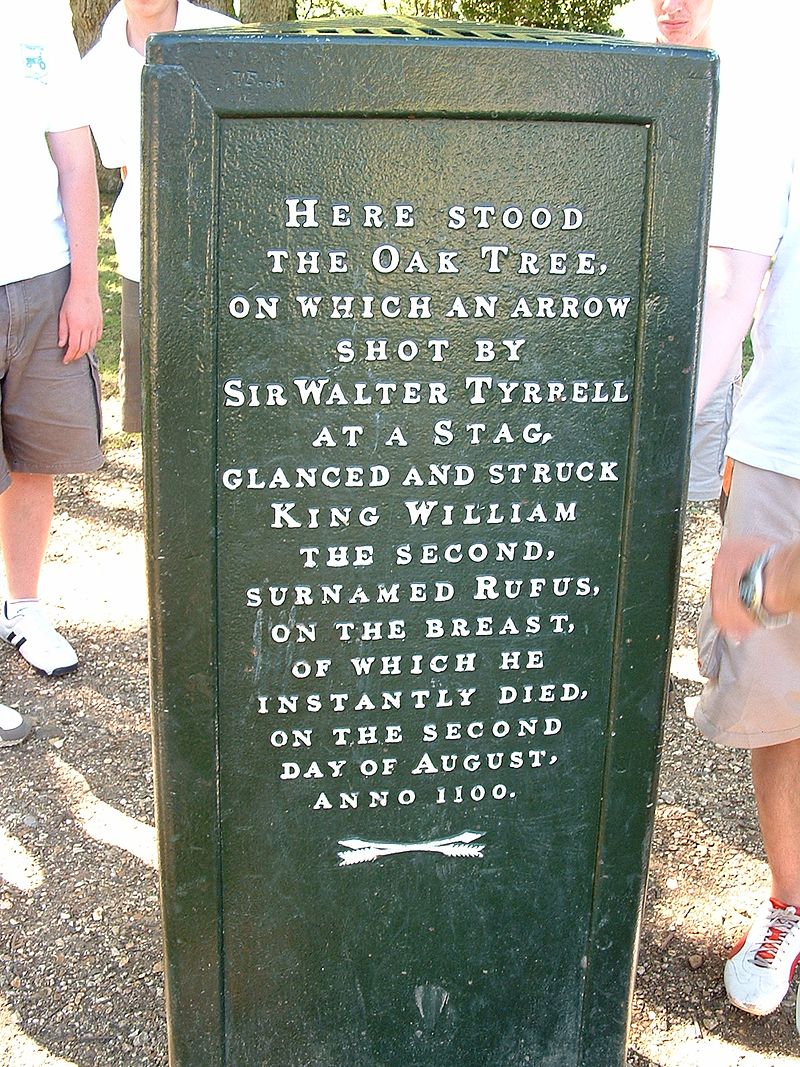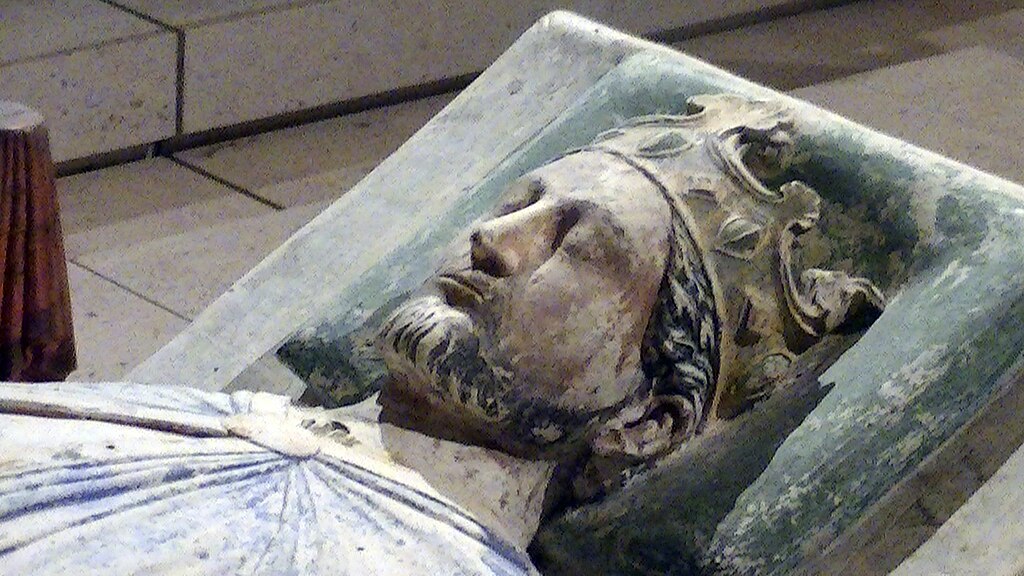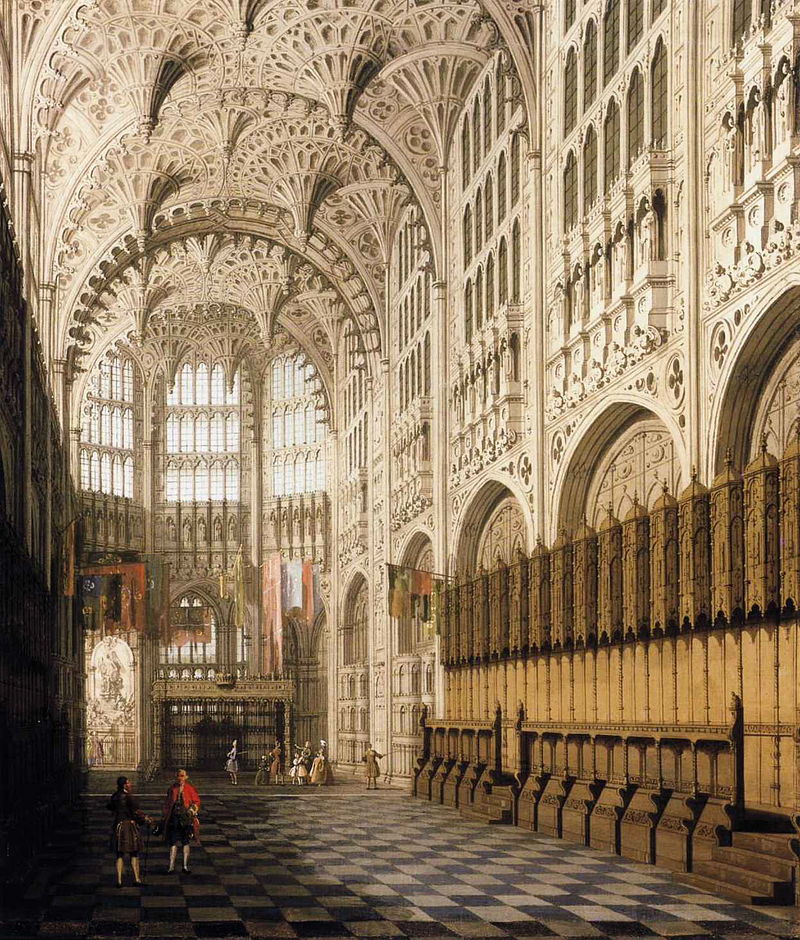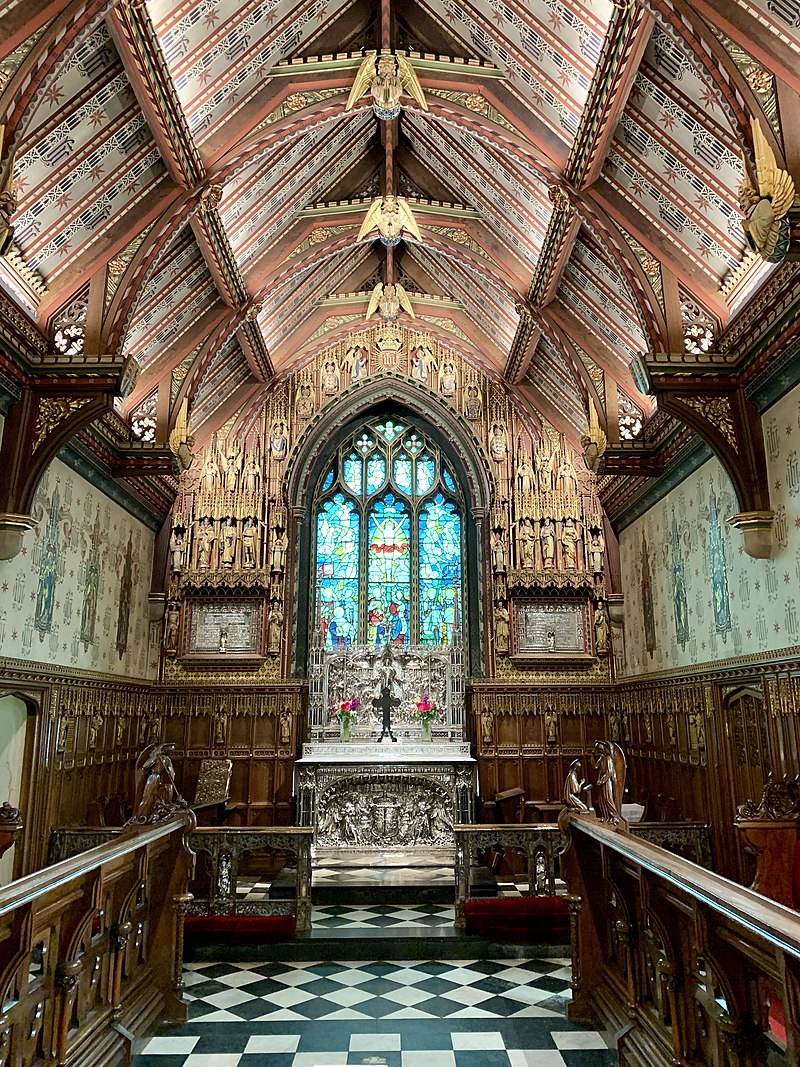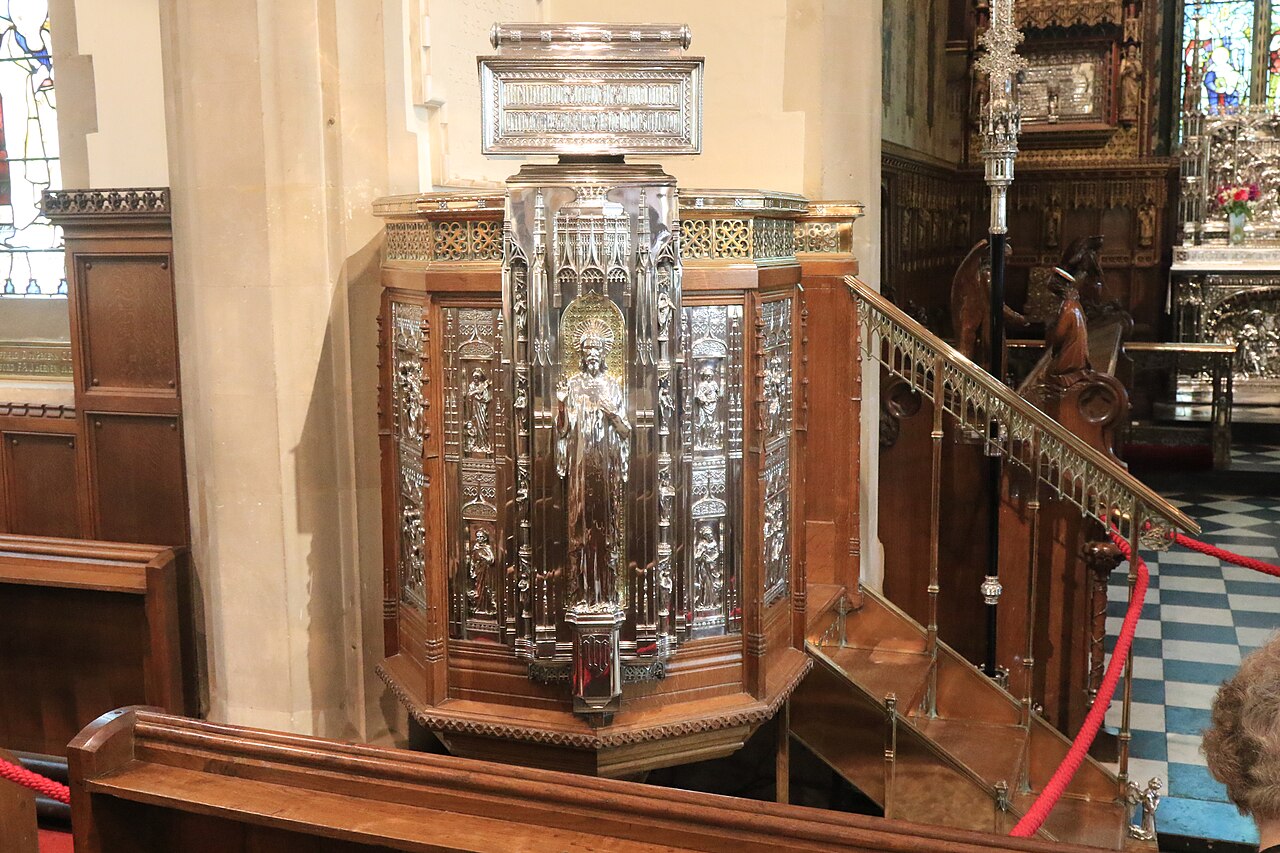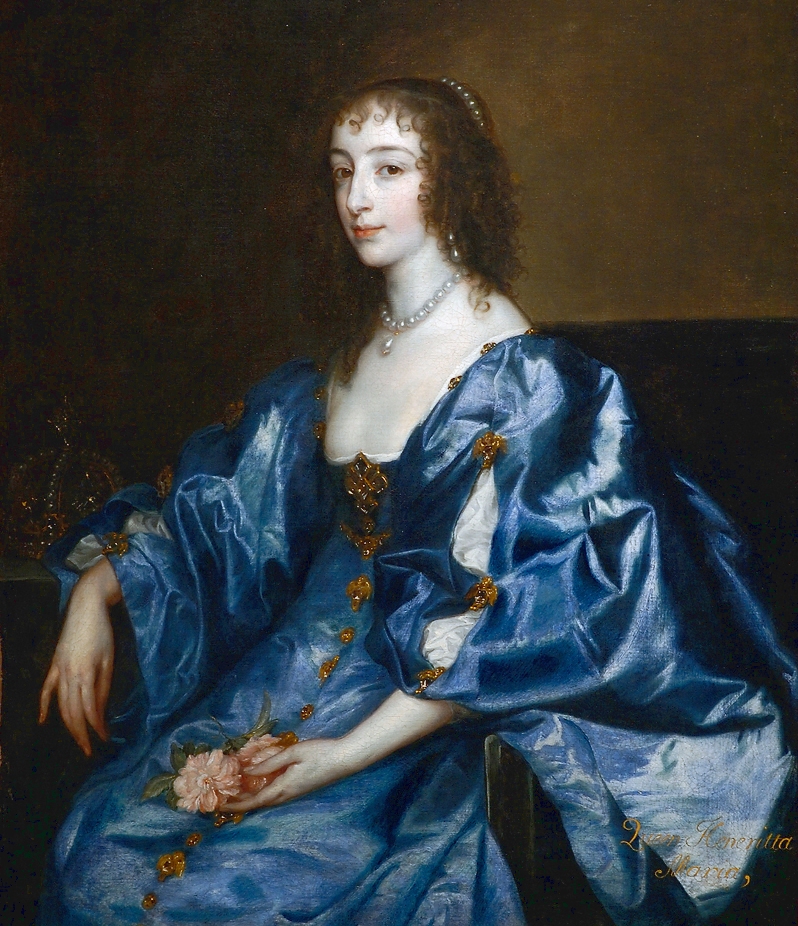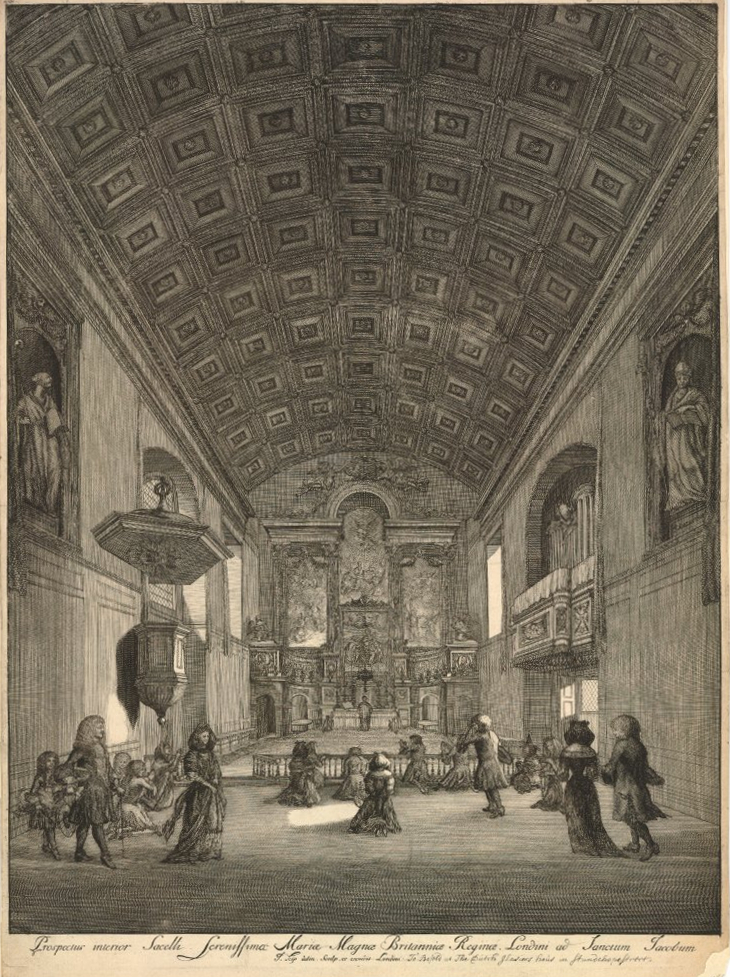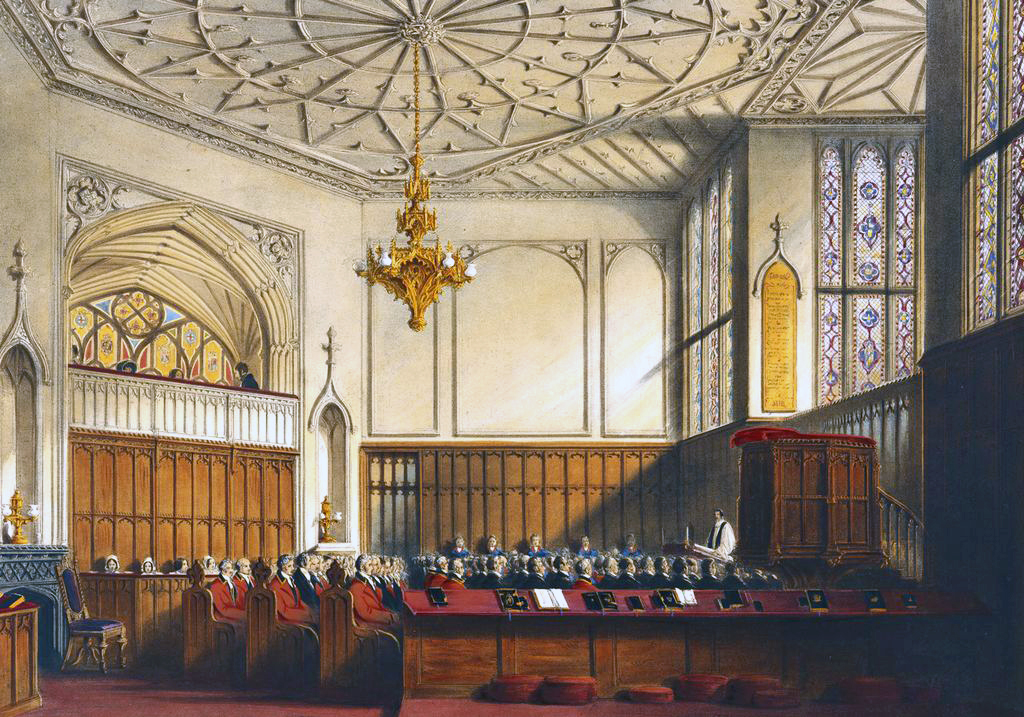by Susan Flantzer
© Unofficial Royalty 2022

Prince Philip accompanying Queen Elizabeth II at the 2015 Trooping the Colour; Credit – Wikipedia
On March 29, 2022, a Service of Thanksgiving for His Royal Highness Prince Philip, Duke of Edinburgh was held at Westminster Abbey in London, England. Prince Philip, Duke of Edinburgh died at Windsor Castle in Windsor, England on April 9, 2021, at the age of 99, just two months short of his 100th birthday. The funeral of Prince Philip, Duke of Edinburgh took place on Saturday, April 17, 2021, at St. George’s Chapel, Windsor Castle in Windsor England. The Thanksgiving Service was organized because due to COVID-19 restrictions, there could be only 30 guests at the funeral.
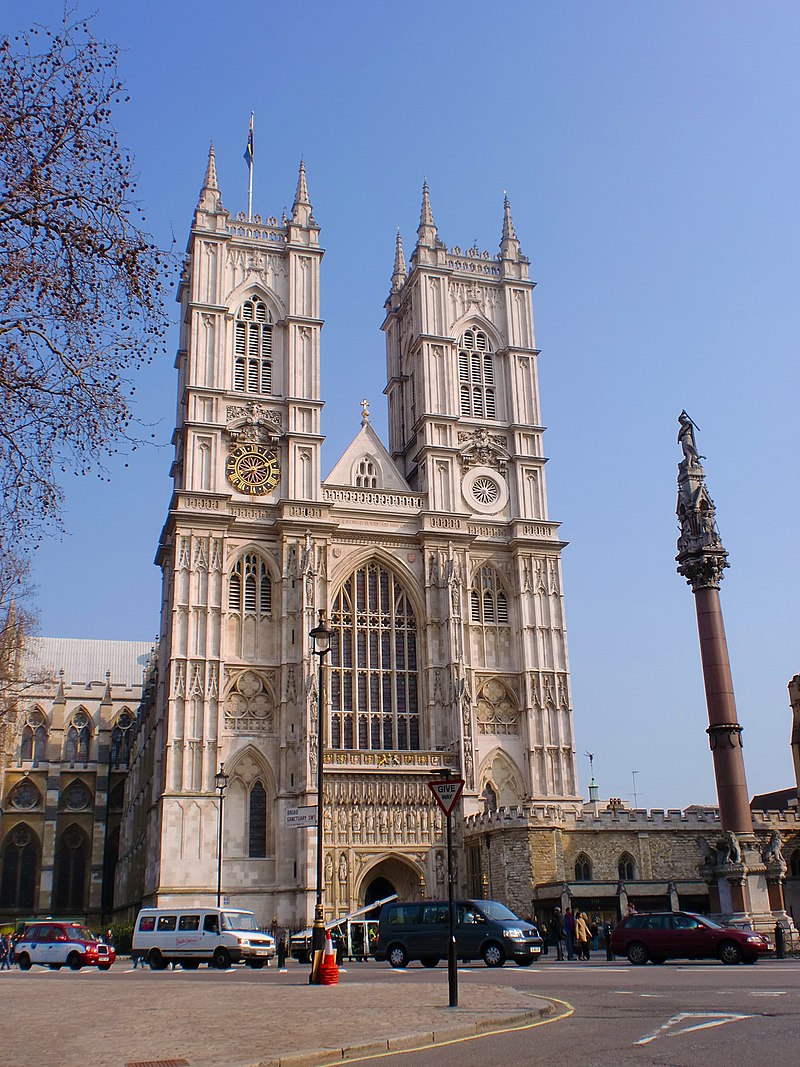
Westminster Abbey; Photo Credit – By Σπάρτακος – Own work, CC BY-SA 3.0, https://commons.wikimedia.org/w/index.php?curid=26334184
********************
Guests
The Duke and Duchess of Cambridge arrive at Westminster Abbey with their two eldest children Prince George and Princess Charlotte
1,800 invited guests attended the Service of Thanksgiving including members of the British Royal Family, representatives from current and former royal families, representatives from Prince Philip’s birth family, political leaders, and representatives of many of Prince Philip’s charities.
Many guests wore Edinburgh green, a color closely associated with Prince Philip. The color was used in many official capacities relating to his position, including the uniforms of his staff and his cars. The Land Rover which was used to carry his coffin to his funeral in 2021 was Edinburgh green and the Order of Service for the Service of Thanksgiving was printed in Edinburgh green.
British royal family in the front rows, followed by foreign royalty and other important guests
Guests included:
British Royal Family
Some members of the British royal family
- Queen Elizabeth II
- The Prince of Wales and The Duchess of Cornwall
- The Duke and Duchess of Cambridge
- Prince George of Cambridge
- Princess Charlotte of Cambridge
- The Duke of York
- Princess Beatrice and her husband Edoardo Mapelli Mozzi
- Princess Eugenie and her husband Jack Brooksbank
- The Earl and Countess of Wessex
- The Lady Louise Mountbatten-Windsor
- James Mountbatten-Windsor, The Viscount Severn
- The Princess Royal and Vice Admiral Sir Tim Laurence
- Peter Phillips, son of The Princess Royal, and his daughters Savannah Phillips and Isla Phillips
- Zara Tindall, daughter of The Princess Royal, her husband Mike Tindall, and their daughter Mia Tindall
- David Armstrong-Jones, 2nd Earl of Snowdon, son of Princess Margaret and his children Charles Armstrong-Jones, Viscount Linley and Lady Margarita Armstrong-Jones
- Lady Sarah Chatto, daughter of Princess Margaret, her husband Daniel Chatto and their sons Samuel Chatto and Artur Chatto
- The Duke and Duchess of Gloucester
- Alexander Windsor, Earl of Ulster, son of The Duke of Gloucester
- Lady Rose Gilman, daughter of The Duke of Gloucester and her husband George Gilman
- The Duke of Kent
- George Windsor, Earl of St Andrews, son of The Duke of Kent, and his wife Sylvana Tomaselli, Countess of St Andrews and their children Edward Windsor, Lord Downpatrick and Lady Amelia Windsor
- Lady Helen Taylor, daughter of The Duke of Kent, and her son Cassius Taylor
- Prince and Princess Michael of Kent
- Lord Frederick Windsor and his wife Sophie Winkleman, Lady Frederick Windsor
- Lady Gabriella Windsor, daughter of Prince Michael of Kent, and her husband Thomas Kingston
- James Ogilvy, son of Princess Alexandra of Kent, The Honorable Lady Ogilvy, and his wife Julia Oglivy with their daughter Flora Ogilvy and her husband Timothy Vesterberg
- Zenouska Mowatt, daughter of Marina Ogilvy who is Princess Alexandra’s daughter
Relatives of Prince Philip
Prince Philip’s great-nephew Philipp, Prince of Hohenlohe-Langenburg
Prince Philip’s four sisters were represented by members of the House of Baden, the House of Hohenlohe-Langenburg, and the House of Hesse, all former monarchies. The Mountbatten family was represented by Penelope Knatchbull, the wife of the current Earl Mountbatten of Burma, and India Hicks, the granddaughter of Prince Philip’s maternal uncle Louis Mountbatten, 1st Earl Mountbatten of Burma.
- Penelope Knatchbull, Countess Mountbatten of Burma, a close friend of Prince Philip and the wife of Norton Louis Philip Knatchbull, 3rd Earl Mountbatten of Burma, son of Prince Philip’s first cousin Patricia Mountbatten, 2nd Countess Mountbatten of Burma and grandson of Prince Philip’s uncle Louis Mountbatten, 1st Earl Mountbatten of Burma
- India Hicks, daughter of Prince Philip’s first cousin Lady Pamela Mountbatten and granddaughter of Prince Philip’s uncle Louis Mountbatten, 1st Earl Mountbatten of Burma, and her husband David Flint Wood
- Bernhard, Hereditary Prince of Baden: Heir to the Head of the House of Baden, great-nephew of Prince Philip, son of Maximilian, Margrave of Baden who is the son of Prince Philip’s sister Princess Theodora of Greece and Denmark and Berthold, Margrave of Baden
- Stephanie Anne Kaul, Hereditary Princess of Baden, wife of Bernhard, Hereditary Prince of Baden
- Philipp, Prince of Hohenlohe-Langenburg: Head of the House of Hohenlohe-Langenburg, great-nephew of Prince Philip, son of Kraft, Prince of Hohenlohe-Langenburg who is the son of Prince Philip’s sister Princess Margarita of Greece and Denmark and Gottfried, Prince of Hohenlohe-Langenburg
- Saskia Binder, Princess of Hohenlohe-Langenburg, wife of Philipp, Prince of Hohenlohe-Langenburg
- Prince Donatus, Landgrave of Hesse: Head of the House of Hesse, into which Prince Philip’s sisters Princess Cecile of Greece and Denmark and Princess Sophie of Greece and Denmark married.
- Countess Floria Franziska Marie-Luisa Erika von Faber-Castell, Princess of Hesse, wife of Prince Donatus, Landgrave of Hesse
Foreign Royalty
Queen Máxima and King Willem-Alexander of the Netherlands, King Felipe VI of Spain, Princess Beatrix of the Netherlands, Prince Albert II of Monaco, and Queen Margrethe II of Denmark
Prince Philip was born a Prince of Greece and Denmark and his Greek and Danish family background was represented by Queen Margrethe II of Denmark and Queen Anne-Marie of the Hellenes (born a Princess of Denmark, Queen Margrethe II’s sister), Crown Prince Pavlos and Crown Princess Marie-Chantal of Greece, and Prince Philippos and Princess Nina of Greece
King Harald V of Norway, the closest current monarch relative of Queen Elizabeth II (they are both great-grandchildren of King Edward VII of the United Kingdom), and his wife Queen Sonja were invited but were unable to attend because King Harald was recovering from COVID-19.
Current Monarchies
Queen Margrethe II of Denmark and Princess Beatrix of the Netherlands (formerly Queen Beatrix) leave Westminster Abbey after the Service of Thanksgiving
- Crown Prince Salman bin Hamad Al Khalifa of Bahrain
- King Philippe and Queen Mathilde of the Belgians
- Queen of Margrethe II Denmark
- Prince Hassan bin Talal and Princess Sarvath El Hassan of Jordan
- Grand Duchess Maria Teresa of Luxembourg
- Prince Albert II of Monaco
- King Willem-Alexander and Queen Máxima of the Netherlands
- Princess Beatrix of the Netherlands
- King Felipe VI and Queen Letizia of Spain
- King Carl XVI Gustaf and Queen Silvia of Sweden
- Princess Christina, Mrs. Magnuson
Former Monarchies
Prince Philip’s granddaughter Zara Tindall has a word with Queen Anne-Marie of Greece, the wife of former King Constantine II of Greece, Prince Philip’s first cousin once removed
- Queen Anne-Marie of Greece
- Crown Prince Pavlos and Crown Princess Marie-Chantal of Greece
- Prince Philippos and Princess Nina of Greece
- Princess Margareta of Romania, Custodian of the Crown of Romania and Prince Radu of Romania
- Crown Prince Alexander and Crown Princess Katherine of Serbia
- Prince Kyril of Preslav (Bulgaria)
Government Officials
Prime Minister Boris Johnson talks to clergy at Westminster Abbey as he arrives for the Service of Thanksgiving
- Boris Johnson, Prime Minister of the United Kingdom
- Dame Eleanor Laing, Deputy Speaker of the House of Commons
- John Francis McFall, Baron McFall of Alcluith, Lord Speaker of the House of Lords
- Andrew Smith, Lord Mayor of Westminster and The Lady Mayoress Salma Shah
- Sir Keir Starmer, Leader of the Labour Party and Leader of the Opposition in the House of Commons
- Rishi Sunak, Chancellor of the Exchequer
- Priti Patel, Home Secretary
- Liz Truss, Foreign Secretary
- Nicola Sturgeon, First Minister of Scotland
- Mark Drakeford, First Minister of Wales
- Ian Blackford, Leader of the Scottish National Party in the House of Commons
- Sir Ed Davey, Leader of the Liberal Democrats in the House of Commons
- Simon Case, British civil servant who is the Cabinet Secretary and Head of the Home Civil Service
- Admiral Sir Tony Radakin, Chief of the Defence Staff
- Professor Sir Chris Whitty, Chief Medical Officer for England (CMO) and Chief Medical Adviser to the UK Government
- Cressida Dick, Metropolitan Police Commissioner
*********************
The Service of Thanksgiving
The arrangements for Prince Philip’s funeral had been planned over many years, with his involvement and The Queen signing off on the funeral plans. However, when Prince Philip died, last-minute changes were necessary to ensure compliance with COVID-19 restrictions. Some of the original arrangements that had to be omitted from the funeral on April 17, 2021, were included in the Service of Thanksgiving. The Queen was also actively involved in the planning of the Service of Thanksgiving.
It was Prince Philip’s wish that clergy from Crathie Kirk near Balmoral in Scotland, St. Mary Magdalene Church in Sandringham, England, and the Royal Chapel of All Saints in Windsor, England should play a role in his funeral. However, due to COVID-19 restrictions, this was impossible and so they were included in the Service of Thanksgiving. In line with COVID-19 government guidelines at the time of Prince Philip’s funeral, there was no congregational singing. Some of the hymns used during the Service of Thanksgiving had been chosen by Prince Philip for his funeral.
Queen Elizabeth II during the Service of Thanksgiving
Because of the recent mobility issues of the nearly 96-year-old Queen Elizabeth II, she entered Westminster Abbey by a side door which allowed her to walk a shorter distance from Poets’ Corner to her seat. For her comfort, the length of the service was limited to forty-five minutes.
The service was led by David Hoyle, Dean of Westminster. Justin Welby, Archbishop of Canterbury, James Wallace, Baron Wallace of Tankerness, Moderator of the General Assembly of the Church of Scotland, Dame Sarah Mullally, Dean of Her Majesty’s Chapels Royal, Mark Birch, Minor Canon and Precentor, Kenneth MacKenzie, Minister of Crathie Kirk, Jonathan Riviere, Rector of Sandringham, Martin Poll, Chaplain to the Royal Chapel of All Saints in Windsor Great Park, Paul Wright, Sub-Dean of Her Majesty’s Chapels Royal, and James Hawkey, Canon in Residence also participated in the Service of Thanksgiving.
The choir and congregation sang the hymn He Who Would Valiant Be, adapted from an English folk song, arranged by James O’Donnell (born 1961), words from The Pilgrim’s Progress by John Bunyan (1628 – 1688).
David Hoyle, Dean of Westminster said The Bidding.
Doyin Sonibare gives her tribute to Prince Philip
Doyin Sonibare, who holds the Gold Level of a Duke of Edinburgh Award, gave a tribute, speaking of her experience working towards the award when she was 18-years-old.
James Wallace, Baron Wallace of Tankerness, Moderator of the General Assembly of the Church of Scotland read The First Lesson, Isaiah 40:25-31 and Dame Sarah Mullally, Dean of Her Majesty’s Chapels Royal read The Second Lesson, Philippians 4:4-9.
The choir and the congregation sang the hymn All Creatures of Our God and King, music by Ralph Vaughan Williams after a melody in 1623 Geistliche Kirchengesäng Cologne, arranged by James O’Donnell, words by St Francis of Assisi (1182 – 1226), translated by William Draper (1855 – 1933).
David Conner, Dean of Windsor gives The Address
David Conner, Dean of Windsor, gave The Address, paying tribute to Prince Philip.
The choir sang Te Deum in C by Benjamin Britten (1913 – 1976)
Prayers were offered giving thanks for Prince Philip’s service as Consort, for his devotion to Family, to Nation, and to Commonwealth, for his energy and spirit of adventure, for his work with the young to discover new skills and serve their communities, for his work in conservation and the good stewardship of the environment, for his gifts of character, for his humor and resilience, and for his fortitude and devotion to duty by Mark Birch, Minor Canon and Precentor, Kenneth MacKenzie, Minister of Crathie Church, Jonathan Riviere, Rector of Sandringham, Martin Poll, Chaplain to the Royal Chapel of All Saints, Windsor Great Park, Paul Wright, Sub-Dean of Her Majesty’s Chapels Royal, and James Hawkey, Canon in Residence.
Members of the congregation sing a hymn during the Service of Thanksgiving
The choir and congregation sang the hymn Guide Me, O Thou Great Redeemer, music by John Hughes (1873 – 1932), arranged by James O’Donnell, words from Arglwydd, arwain trwy’r anialwch by William Williams (1717 – 1791), translated from Welsh by Peter Williams (1727 – 1796) and others
Justin Welby, Archbishop of Canterbury gave The Blessing
The Service of Thanksgiving ended with the singing of The National Anthem, God Save The Queen.
*********************
- For more detailed information about the Service of Thanksgiving, see British Monarchy: Order of Service: A Service of Thanksgiving for HRH The Prince Philip, Duke of Edinburgh.
- To watch the Service of Thanksgiving, see YouTube: Prince Philip: A Service of Thanksgiving for HRH The Duke of Edinburgh 2022
- View photos of guests and the Thanksgiving Service at Getty Images: Service Of Thanksgiving For The Duke Of Edinburgh
*********************
This article is the intellectual property of Unofficial Royalty and is NOT TO BE COPIED, EDITED, OR POSTED IN ANY FORM ON ANOTHER WEBSITE under any circumstances. It is permissible to use a link that directs to Unofficial Royalty.
Works Cited
- BBC News. 2022. As it happened: Prince Philip Queen joins royals for memorial service – BBC News. [online] Available at: <https://www.bbc.com/news/live/uk-60904990> [Accessed 1 April 2022].
- BBC News. 2022. Queen attends Prince Philip memorial service at Westminster Abbey. [online] Available at: <https://www.bbc.com/news/uk-60902088> [Accessed 1 April 2022].
- Flantzer, Susan, 2021. Funeral of Prince Philip, Duke of Edinburgh. [online] Unofficial Royalty. Available at: <https://www.unofficialroyalty.com/funeral-of-prince-philip-duke-of-edinburgh/> [Accessed 1 April 2022].
- Howard, Harry, 2022. The day the Queen got to say goodbye to Philip the way she wanted. [online] Mail Online. Available at: <https://www.dailymail.co.uk/news/article-10663357/The-day-Majesty-finally-got-say-goodbye-Philip-way-wanted.html> [Accessed 1 April 2022].
- Pearson-Jones, Bridie, 2022. Prince Philip’s family at Westminster Abbey for memorial service. [online] Mail Online. Available at: <https://www.dailymail.co.uk/femail/article-10663319/Prince-Philips-family-arrive-Westminster-Abbey-Duke-Edinburghs-memorial-service.html> [Accessed 1 April 2022].
- Royal.uk. 2022. Order of Service – A Service of Thanksgiving for HRH The Prince Philip, Duke of Edinburgh. [online] Available at: <https://www.royal.uk/sites/default/files/media/order_of_service_-_a_service_of_thanksgiving_for_hrh_the_prince_philip_duke_of_edinburgh.pdf> [Accessed 1 April 2022].
- The Royal Family. 2022. Service of Thanksgiving for the life of The Duke of Edinburgh. [online] Available at: <https://www.royal.uk/service-thanksgiving-life-duke-edinburgh> [Accessed 1 April 2022].















